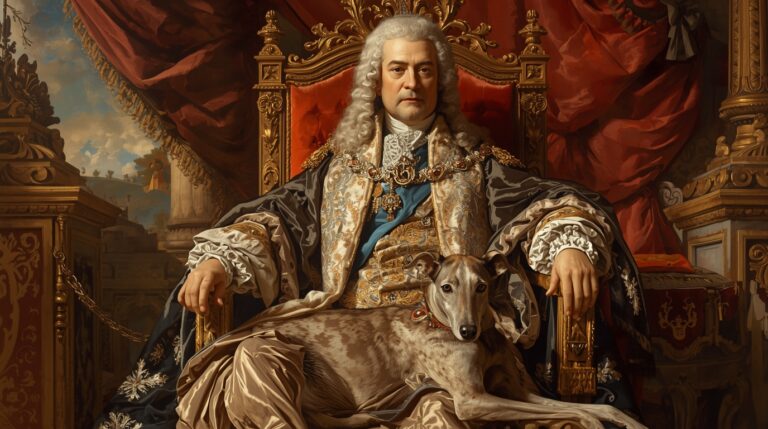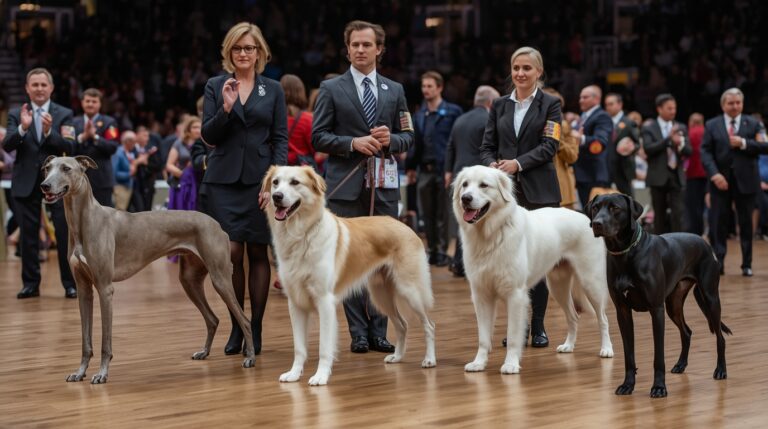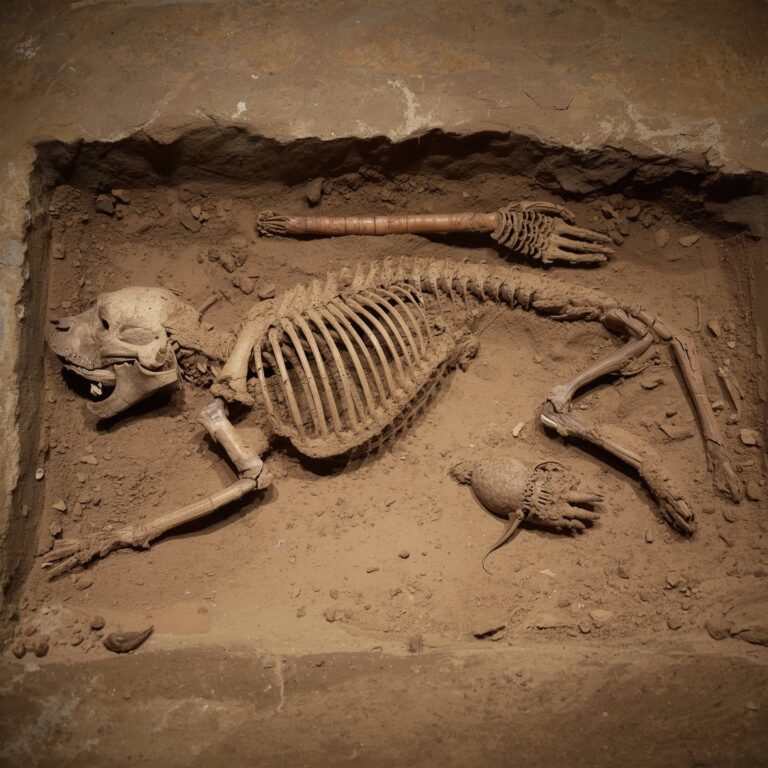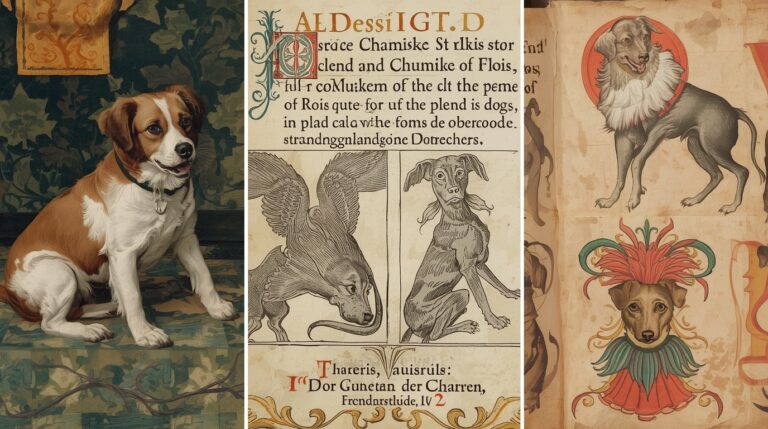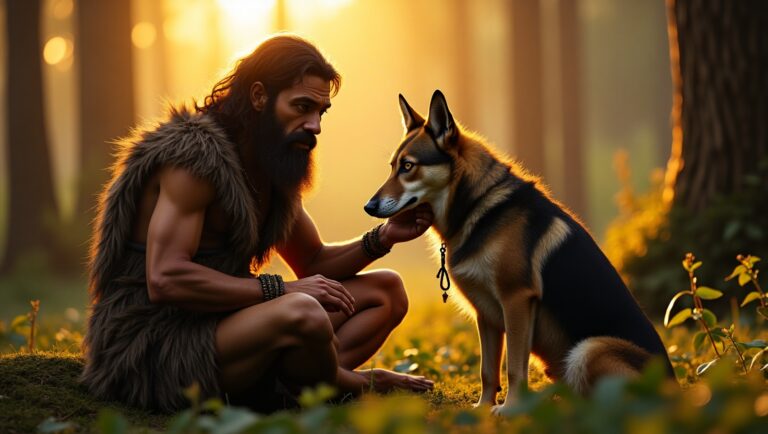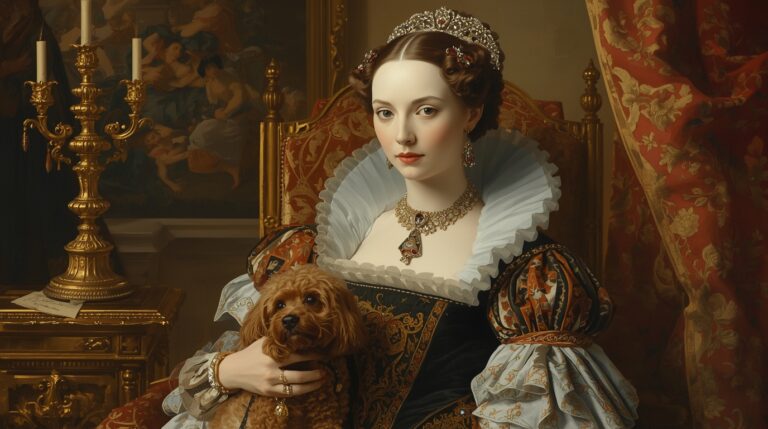Dogs in Celtic and Norse Legends

Introduction
In ancient European folklore, dogs were far more than loyal companions—they were symbols of war, guides to the afterlife, shapeshifters, and harbingers of fate. In both Celtic and Norse legends, hounds served as powerful mythological figures, often associated with gods, death, prophecy, and spiritual guardianship. From the Cŵn Annwn, spectral hounds that roam the skies of Welsh myth, to Garmr, the bloodstained dog guarding the gates of Hel in Norse cosmology, canines reflect the values and metaphysical anxieties of warrior cultures.
This article examines the sacred and symbolic role of dogs in the Celtic and Norse traditions, analyzing legendary hounds, divine associations, ritual roles, and the shared meanings that persist across these mythological systems.
Dogs in Celtic Mythology: An Overview
In Celtic mythology, particularly from Irish, Welsh, and Scottish traditions, dogs (hounds) were often revered as supernatural protectors, warriors, and omens. The Celts believed that hounds had the ability to traverse the mortal realm and the Otherworld, making them valuable guides and guardians in both life and death.
Canines were associated with the hunt, loyalty, battle, and death—appearing frequently in oral tales, stone carvings, and burial sites. They often acted as companions to heroes or tools of divine justice employed by deities like the Morrígan or Arawn, the Lord of the Otherworld.
Cú Chulainn and the Hound Identity
One of the most famous figures in Irish mythology is Cú Chulainn, whose name literally means “Hound of Culann“. Originally named Setanta, he earned his legendary title by killing the guard dog of the smith Culann and volunteering to take its place until a new one could be trained.
This act of sacrifice and honor linked him permanently to the symbol of the dog, embodying its qualities of strength, loyalty, and relentless pursuit. As a warrior, Cú Chulainn often entered battle-frenzies where he would transform into a near-beastly state, reinforcing the idea that the hound was not only a symbol, but a sacred energy he inhabited.
Cŵn Annwn: The Otherworld Hounds
In Welsh mythology, the Cŵn Annwn are supernatural hounds that belong to Arawn, the ruler of Annwn, the Celtic Otherworld. These dogs are described as white with red ears, a color scheme often used in Celtic myth to denote the supernatural or liminal.
The Cŵn Annwn were said to lead the Wild Hunt, a spectral procession that gathered souls and warned of imminent death. Their howls echoed across the night sky and were believed to be audible omens. Unlike typical dogs, they ran silently and their barking grew softer the closer they came, heightening their terrifying presence.
The Role of Dogs in Celtic Rituals and Omens
Archaeological finds across Ireland and Britain have uncovered dog burials that suggest ritual significance. Dogs were sometimes buried alongside warriors, and in some cases, appear to have been sacrificed in funerary rites. These findings underscore the belief that dogs accompanied their masters into the afterlife.
In folklore, dogs were also associated with omens of death. Seeing a black dog at a crossroads or hearing a phantom howl were interpreted as warnings from the spirit realm. In Scottish tales, the Cù Sìth, a monstrous green hound, was said to snatch souls or guard fairy mounds, symbolizing the boundary between the human world and the divine.
The Morrígan and Her Symbolic Beasts
The Morrígan, goddess of war, death, and sovereignty, often appeared as a shape-shifter—taking the form of a crow, wolf, or black hound. She used these forms to foretell the death of warriors, intervene in battle, or punish the arrogant.
In some texts, she is accompanied by ghostly hounds that attack the souls of the unworthy or guard sacred thresholds. Her association with dogs reaffirms their role as agents of judgment, fate, and divine justice.
Norse Mythology: Wolves, Dogs, and War
In Norse mythology, the distinction between dogs and wolves often blurs. While wolves like Fenrir receive much of the attention, canine figures appear frequently in warrior and underworld contexts, often serving as gatekeepers, trial-bringers, or symbols of untamed power.
Dogs in the Norse world symbolized battle loyalty, strength, and death, reflecting the values of a culture steeped in warfare and belief in Ragnarök, the end of the world.
Garmr: The Guardian of Hel
Garmr is a mythical watchdog stationed at the entrance to Hel, the Norse realm of the dead ruled by the goddess Hel. He is sometimes described as chained and blood-soaked, and during Ragnarök, he is prophesied to break free and battle the god Tyr.
Garmr’s role is strikingly similar to Cerberus, the three-headed dog of Hades in Greek mythology. He is both a guardian of the dead and a symbol of chaos unleashed, embodying Norse fatalism and inevitability.
Fenrir: The Monstrous Wolf and Mythic Chaos
Although technically a wolf, Fenrir, the son of Loki, holds symbolic similarities to mythological dogs. He is the embodiment of bound power, destined to kill Odin during Ragnarök. His siblings—Jörmungandr and Hel—represent other forces of cosmic destruction.
Fenrir’s imagery often includes elements of guardianship, punishment, and prophetic inevitability, themes echoed in the portrayal of sacred hounds across European mythology. Like dogs in Celtic lore, Fenrir straddles the line between guardian and annihilator.
Dogs and Warriors in Viking Lore
In Viking sagas, dogs appear as hunting companions, battle allies, and loyal afterlife guides. Grave sites like the Oseberg Ship Burial include canine remains, indicating that dogs were considered worthy companions in death.
Some tales mention sacrificing dogs before battle to secure victory or favor from the gods. This brutal practice reinforced the belief that dogs were spiritually potent, capable of influencing divine will.
Dogs in Norse Funeral Rites and Symbolism
In ship burials and mound graves, dogs were often laid beside warriors or nobles, wrapped in ritual bindings. These dogs were not merely pets—they were symbols of loyalty and spiritual continuity.
In Eddic poetry, such as the Grímnismál, descriptions of gates guarded by beasts suggest that dogs also served as guardians in the journey to Valhalla or Hel, depending on the warrior’s fate.
Dog-Related Shapeshifters in Norse Lore
Norse mythology includes warriors who fought in altered states, such as the berserkers (bear-skins) and ulfhednar (wolf-skins). These transformations symbolized the internal power of animal instincts, used to enhance battle prowess.
Although mostly associated with wolves, similar canine transformations appear in tales of werewolves, magical warriors who could take on dog-like forms. These stories emphasize the Norse view of dogs as wild, fierce, and supernatural.
Shared Symbols Across Celtic and Norse Traditions
Both mythologies portray dogs as liminal creatures—those who live between worlds. Whether guiding souls, serving gods, or testing heroes, these canines symbolize mystical access, martial virtue, and the inevitability of death.
They act as guards at thresholds, whether at tomb doors or spiritual realms, and often appear at critical moments of transformation, suggesting their role as psychopomps across European myth.
Canine Guardians of the Underworld
In both traditions, dogs are portrayed as keepers of the dead. Whether Cŵn Annwn patrolling the Otherworld, or Garmr guarding Hel, these dogs signal the sacred boundary between life and death.
Their presence in dreams, rituals, and burials reflects a widespread belief in the dog as a spiritual sentinel, not to be taken lightly.
The White Hound in Irish and Scottish Lore
In Celtic tales, white hounds with red ears often serve as faerie dogs, appearing in stories of the Sídhe (the fairy folk). They are portents of fate, able to steal souls or guide them to the Otherworld.
These hounds are sometimes benevolent, at other times ominous, reinforcing the dual nature of dogs in Celtic belief: both protector and punisher, sacred and deadly.
Dogs in Magical Trials and Heroic Tests
Many heroes in Irish and Norse myths face trials involving dogs. Sometimes they must defeat them, other times rescue them or accept them as companions.
Dogs are often the final test of character, used to reveal virtue, courage, or treachery. In these stories, the dog’s behavior acts as divine judgment, revealing who is truly worthy.
Symbolism of Black and White Dogs
Color symbolism adds another layer. In both traditions:
- Black dogs often signify death, destruction, or divine vengeance.
- White dogs represent spiritual guidance, purity, or divine protection.
These colors are not moral absolutes but metaphysical indicators, guiding the audience through themes of rebirth, danger, and divine will.
Legacy of Mythological Dogs in Modern Culture
From fantasy fiction to video games and film, the mythic dog has endured. Stories like The Hound of the Baskervilles, The Witcher, and God of War borrow heavily from Celtic and Norse archetypes.
These legends have shaped our understanding of loyalty, sacrifice, and supernatural power, keeping these ancient dogs alive in modern imaginations.
Dogs as Totemic and Protective Figures
Across both cultures, warriors and clans used dog symbols in totems, shields, and crests. These images conveyed strength, loyalty, and divine backing—proving that the dog was not just a companion, but a protector in both battle and spirit.
Even today, the dog’s likeness appears in family names, clan symbols, and military insignia, demonstrating the animal’s lasting cultural and mythological power.
Conclusion
Dogs in Celtic and Norse legends are far more than animals—they are symbols of loyalty, spiritual guardianship, martial strength, and thresholds between worlds. They appear in stories of gods, warriors, and ghosts, reminding us of the sacred role of the hound in understanding life, death, and divine purpose.
Whether snarling at the gates of Hel or leading souls into Annwn, these mythic canines represent the eternal intersection of humanity, nature, and the divine.
